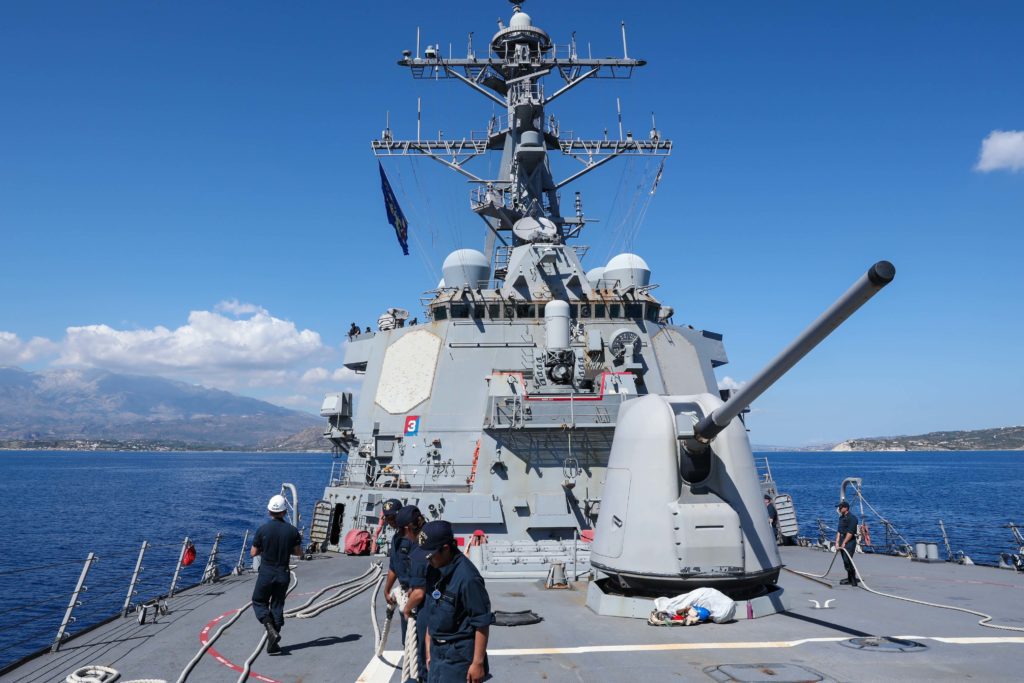
ARLINGTON, Va. — The U.S. Navy urgently needs to modernize its battle force in order to meet the near-term challenges of China and Russia if it is to continue to dominate the maritime domain and protect the freedom of the seas, two Congress members and a naval analyst said.
“We as a nation must become a sea power again,” said Dr. Jerry Hendrix, a retired Navy captain, former director of Navy History and Heritage Command, and now vice president of the Telamus Group, speaking in a pre-recorded webinar of the Navy League’s Sea-Air Space Prequel event. “We’re facing a rising global competition right now. This [2022] budget quite frankly in reading of it, is just unserious. It’s unserious in that amount that was funded there and it’s as unserious in the terms of cutting back forces just as we should be adding forces, trying to keep the defense industrial base primed and, in fact, expanding. So, when we actually cut back on the number of surface combatants we’re building, we’re sending a mixed signal to the industrial base when we ought to be singing as a chorus right now about what is needed.”
Hendrix said the U.S. government “seems to be leaning toward a budget that is purely focused on 10 to 15 years out when, in fact, we’ve just had a significant warning from an outgoing retiring four-star [Adm. Phil Davidson, former commander, Indo-Pacific Command] that really the threat can exist six years from now. So, how are we going to meet that near-term threat? That calls for us to be looking at how we modernize and extend the lives of the platforms we have now, which is what we are not doing as a Navy or Department of Defense.”
Rep. Mike Gallagher (R-Wisconsin), a member of the House Armed Services Committee, also speaking in the webinar, said the Navy needs to “build a battle force for 2025, not 2045. As Adm. Davidson has warned, we may have six years or less before the PRC [Peoples Republic of China] takes action against Taiwan. We could have just years to prepare for a war that could decide the course of the 21st century, and that war would be waged, first and foremost, by the sea services. So, we can’t pay lip service to the idea of naval supremacy anymore, we have to earn it. We have to do better if we want to avert disaster and — make no mistake — that is where our present course leads us. We have to act with sense of urgency to advocate for, to build, and resource American seapower before it’s too late.”
Gallagher said Congress needs “to be honest with the American people about the stakes, what it’s going to cost, and the hard choices we have to make. If we fail to reverse the current trends, we’re going to wake up one day and we will either have lost a war or thrown Taiwan under the bus and, in so doing, destroyed American military deterrence in the process.”
“We need to take swift action to improve our fleet architecture to respond to the threats that China poses today,” said Rep. Elaine Luria (D-Virginia), vice chair of the House Armed Services Committee, also speaking at the webinar, noting the need to ready the battle force for 2025, not just 2045.
“The position we find ourselves in is no fault of today’s naval leadership. We’ve really lost a generation of shipbuilding — ship classes that haven’t been built to the same quantity or capability that was initially intended. There is a bigger debate going on in Congress about what the future Navy, the future force structure looks like, and I, myself, was quite disappointed with this [2022] budget from the Navy that in fact did not grow the fleet … and proposed to decommission more ships than it was going to build” in 2022.
- Insitu Going Strong at 30, Focusing on Maritime Operations - April 8, 2024
- Navy Awards Boeing Additional Funds for MQ-25 Drones for Testing - April 3, 2024
- Benign 4th Fleet AOR Useful for Unmanned Vehicle Operationalization, Admiral Says - March 27, 2024






